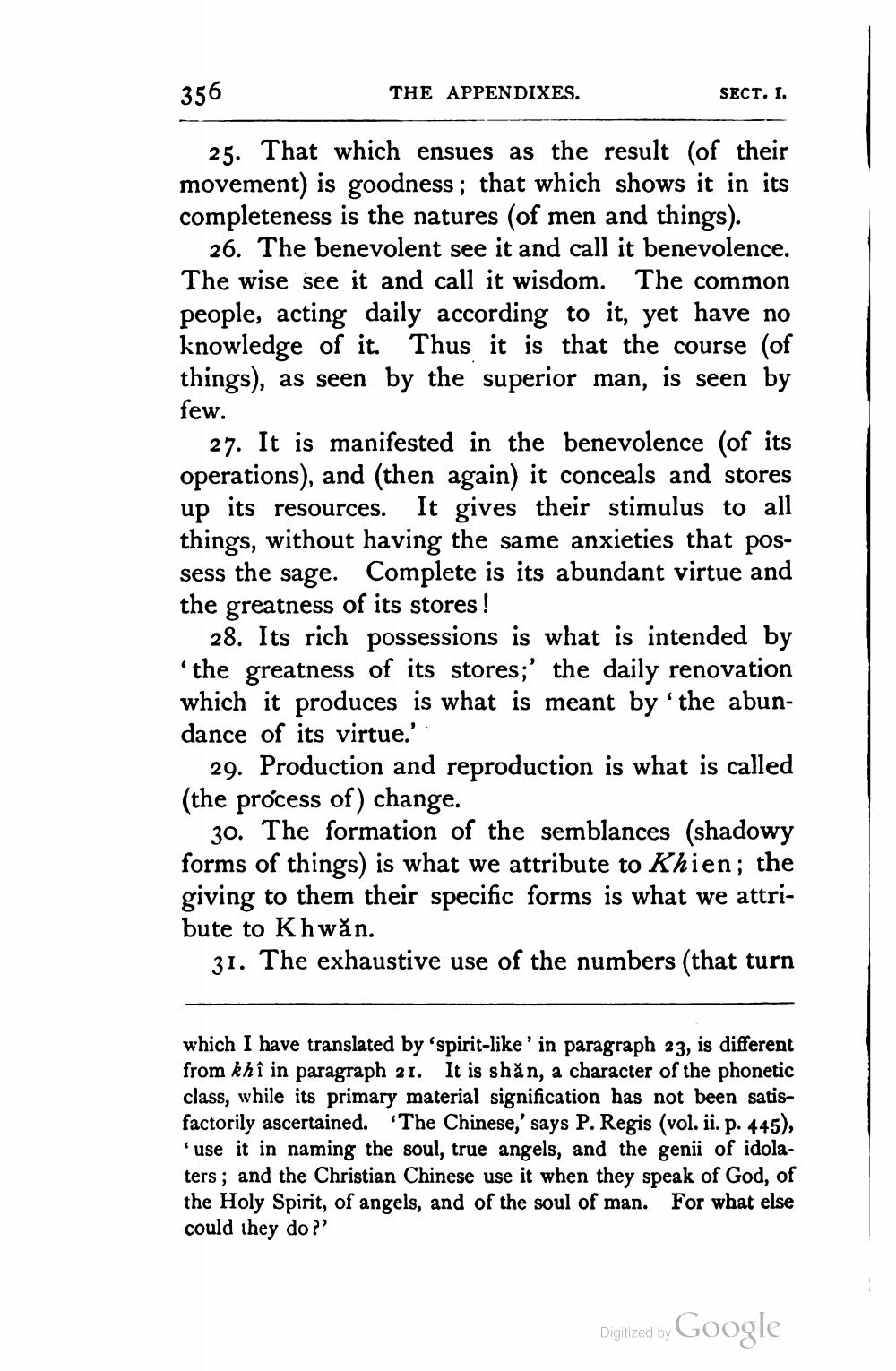________________
356
THE APPENDIXES.
SECT. I.
25. That which ensues as the result (of their movement) is goodness; that which shows it in its completeness is the natures (of men and things).
26. The benevolent see it and call it benevolence. The wise see it and call it wisdom. The common people, acting daily according to it, yet have no knowledge of it. Thus it is that the course (of things), as seen by the superior man, is seen by few.
27. It is manifested in the benevolence (of its operations), and (then again) it conceals and stores up its resources. It gives their stimulus to all things, without having the same anxieties that possess the sage. Complete is its abundant virtue and the greatness of its stores!
28. Its rich possessions is what is intended by *the greatness of its stores;' the daily renovation which it produces is what is meant by the abundance of its virtue.'
29. Production and reproduction is what is called (the process of) change.
30. The formation of the semblances (shadowy forms of things) is what we attribute to Khien; the giving to them their specific forms is what we attribute to Khwăn.
31. The exhaustive use of the numbers (that turn
which I have translated by 'spirit-like'in paragraph 23, is different from khî in paragraph 21. It is shăn, a character of the phonetic class, while its primary material signification has not been satisfactorily ascertained. "The Chinese,' says P. Regis (vol. ii. p. 445),
use it in naming the soul, true angels, and the genii of idolaters; and the Christian Chinese use it when they speak of God, of the Holy Spirit, of angels, and of the soul of man. For what else could ihey do?'
Digitized by Google




